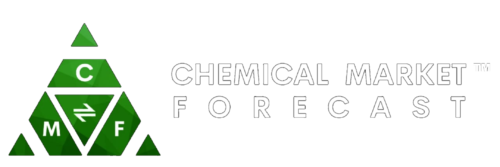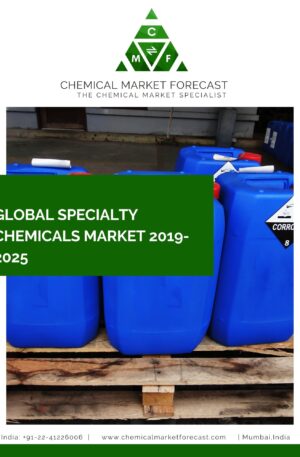Global Mold Release Agents Market
The Global Mold Release Agents Market Report provides an in-depth analysis of the current market trends, growth opportunities, and market forecast. It also covers the key players operating in the market, their market share, and competitive strategies. Additionally, the report provides a detailed segmentation of the market based on type, application, and region, to give a comprehensive understanding of the market dynamics. The report helps market participants and stakeholders to understand the market landscape and make informed decisions.
The mold release agent market refers to the demand and supply of products used in various industries to facilitate the removal of molded parts from the mold surfaces. These agents act as a barrier between the mold and the molded part, reducing friction and adhesion, making it easier to remove the part from the mold.
To meet the needs of various manufacturers developed a line of silicone and solvent-based mould release agents. Most of these products are extremely effective and cure at room temperature. Mold release agents can be permanent or semi permanent. The type chosen will be determined by the manufacturer’s specifications and the substrate used.
Many boat manufacturers use composite materials, such as fibreglass reinforced polyester, to make parts and accessories. Composite release agents ensure that these parts can be easily removed from their moulds and that moulds are not damaged by unwanted adhesion during the manufacturing process, all while maintaining the part’s cosmetic finish. When working with composite mould materials such as fibreglass reinforced polyester, polymer concrete, and advanced composites, specialised release agents should be used. Using the proper mould release agent will improve the production process’s results.
Molds are frequently used to shape rubber parts and accessories found in a variety of automotive applications. The substrate would adhere to the mould during production if rubber release agents were not used. This can lead to finished product damage and a slower manufacturing process. A rubber mould release agent forms a protective film between the rubber and the mould, allowing for quick removal from the mould while preserving part details. This will prevent adhesion between the two surfaces as well as mould fouling, extending the tool’s useful life.
The market for mold release agents is driven by the growth of various end-user industries, such as the automotive, construction, consumer goods, and packaging industries. The demand for mold release agents is also influenced by the increasing use of composite materials in various applications. The use of environmentally friendly and biodegradable mold release agents is also expected to drive market growth.
The market for mold release agents is highly competitive, with a large number of regional and international players. Some of the leading companies in the market include Dow Chemical, Momentive Performance Materials, Croda International, Bluestar Silicones, and Wacker Chemie AG.
TABLE OF CONTENT
Global Mold Release Agents Market Report
1 Market Introduction of Global Mold Release Agents Market Report
2 Market Segmentation of Mold Release Agents Market Report
2.1 Mold Release Agents Market Segmentation By Region
2.2 Mold Release Agents Market Segmentation By Type
2.3 Mold Release Agents Market Segmentation By Crop Type
3 Cost Structure of Global Mold Release Agents Market Report
4 Country Analysis of Global Mold Release Agents Market Report
4.1 China
4.1.1 Mold Release Agents Market Size in China
4.1.2 Mold Release Agents Market Trends & Analysis in China
4.1.3 Key Mold Release Agents companies in China
4.1.4 Regulatory Framework of Mold Release Agents Market in China
4.2 Germany
4.2.1 Mold Release Agents Market Size in Germany
4.2.2 Mold Release Agents Market Trends & Analysis in Germany
4.2.3 Key Mold Release Agents companies in Germany
4.2.4 Regulatory Framework of Mold Release Agents Market in Germany
4.3 France
4.3.1 Mold Release Agents Market Size in France
4.3.2 Mold Release Agents Market Trends & Analysis in France
4.3.3 Key Mold Release Agents companies in France
4.3.4 Regulatory Framework of Mold Release Agents Market in France
4.4 Italy
4.4.1 Mold Release Agents Market Size in Italy
4.4.2 Mold Release Agents Market Trends & Analysis in Italy
4.4.3 Key Mold Release Agents companies in Italy
4.4.4 Regulatory Framework of Mold Release Agents Market in Italy
4.5 Netherland
4.5.1 Mold Release Agents Market Size in Netherland
4.5.2 Mold Release Agents Market Trends & Analysis in Netherland
4.5.3 Key Mold Release Agents companies in Netherland
4.5.4 Regulatory Framework of Mold Release Agents Market in Netherland
4.6 Russia
4.6.1 Mold Release Agents Market Size in Russia
4.6.2 Mold Release Agents Market Trends & Analysis in Russia
4.6.3 Key Mold Release Agents companies in Russia
4.6.4 Regulatory Framework of Mold Release Agents Market in Russia
4.7 Canada
4.7.1 Mold Release Agents Market Size in Canada
4.7.2 Mold Release Agents Market Trends & Analysis in Canada
4.7.3 Key Mold Release Agents companies in Canada
4.7.4 Regulatory Framework of Mold Release Agents Market in Canada
4.8 Mexico
4.8.1 Mold Release Agents Market Size in Mexico
4.8.2 Mold Release Agents Market Trends & Analysis in Mexico
4.8.3 Key Mold Release Agents companies in Mexico
4.8.4 Regulatory Framework of Mold Release Agents Market in Mexico
4.9 Singapore
4.9.1 Mold Release Agents Market Size in Singapore
4.9.2 Mold Release Agents Market Trends & Analysis in Singapore
4.9.3 Key Mold Release Agents companies in Singapore
4.9.4 Regulatory Framework of Mold Release Agents Market in Singapore
4.10 United Kingdom
4.10.1 Mold Release Agents Market Size in United Kingdom
4.10.2 Mold Release Agents Market Trends & Analysis in United Kingdom
4.10.3 Key Mold Release Agents companies in United Kingdom
4.10.4 Regulatory Framework of Mold Release Agents Market in United Kingdom
4.11 Switzerland
4.11.1 Market Size in Switzerland
4.11.2 Market Trends & Analysis in Switzerland
4.11.3 Key Mold Release Agents companies in Switzerland
4.11.4 Regulatory Framework of Mold Release Agents Market in Switzerland
4.12 Brazil
4.12.1 Market Size in Brazil
4.12.2 Market Trends & Analysis in Brazil
4.12.3 Key Mold Release Agents companies in Brazil
4.12.4 Regulatory Framework of Mold Release Agents Market in Brazil
4.13 USA
4.13.1 Market Size in US
4.13.2 Market Trends & Analysis in US
4.13.3 Key Mold Release Agents companies in US
4.13.4 Regulatory Framework of Mold Release Agents Market in US
4.14 Japan
4.14.1 Market Size in Japan
4.14.2 Market Trends & Analysis in Japan
4.14.3 Key Mold Release Agents companies in Japan
4.14.4 Regulatory Framework of Mold Release Agents Market in Japan
4.15 South Korea
4.15.1 Market Size in South Korea
4.15.2 Market Trends & Analysis in South Korea
4.15.3 Key Mold Release Agents companies in South Korea
4.15.4 Regulatory Framework of Mold Release Agents Market in South Korea
4.16 India
4.16.1 Market Size in India
4.16.2 Market Trends & Analysis in India
4.16.3 Key Mold Release Agents companies in India
4.16.4 Regulatory Framework of Mold Release Agents Market in India
4.17 Thailand
4.17.1 Market Size in Thailand
4.17.2 Market Trends & Analysis in Thailand
4.17.3 Key Mold Release Agents companies in Thailand
4.17.4 Regulatory Framework of Mold Release Agents Market in Thailand
4.18 Russia
4.18.1 Market Size in Russia
4.18.2 Market Trends & Analysis in Russia
4.18.3 Key Mold Release Agents companies in Russia
4.18.4 Regulatory Framework of Mold Release Agents Market in Russia
4.19 Malaysia
4.19.1 Market Size in Malaysia
4.19.2 Market Trends & Analysis in Malaysia
4.19.3 Key Mold Release Agents companies in Malaysia
4.19.4 Regulatory Framework of Mold Release Agents Market in Malaysia
4.20 Saudi Arabia
4.20.1 Market Size in Saudi Arabia
4.20.2 Market Trends & Analysis in Saudi Arabia
4.20.3 Key Mold Release Agents companies in Saudi Arabia
4.20.4 Regulatory Framework of Mold Release Agents Market in Saudi Arabia
5 Mold Release Agents Market Trends
5.1 Mold Release Agents Market Trends- Key Drivers
5.2 Mold Release Agents Market Trends- Key Restraints
5.3 Mold Release Agents Market Trends- Key Challenges
5.4 Porter’s Five Forces Analysis of Mold Release Agents Market
5.5 PEST Analysis- Mold Release Agents Market
6 Mold Release Agents Market Forecast
6.1 Mold Release Agents Market Forecast By Region
6.1.1 North America
6.1.2 Europe
6.1.3 APAC
6.1.4 Middle East
6.1.5 ROW
6.2 Mold Release Agents Market Forecast By Type
6.2.1 Fertilizer
6.2.2 Pesticide
6.3 Mold Release Agents Market Forecast By Crop Type
6.3.1 Fruits & Vegetables
6.3.2 Oilseed and Pulses
6.3.3 Cereals & Grains
6.3.4 Other
7 Supply Chain of the Mold Release Agents Market Analysis
8 Opportunity Analysis
9 Scenario Analysis
10 Key Company Profiles
11 Strategic Conclusions – Mold Release Agents Market Report
12 Abbreviations used in Mold Release Agents Market Report






Reviews
There are no reviews yet.